May 7, 2017
Martha O'Kennon
What a strange week! I have the heat turned back on, for the sake of our three fur-covered friends and also now, I admit, for me! I hardly took any scenery pictures, although "Spring" hasn't finished. Here is the redbud tree, still pretty in the rain.

Whereas last week's ants (various forms of Carpenter Ants that always seem happy outdoors) could be seen at any moment, this week they took a break (or went indoors, oops). In fact, among all the other visitors, I only got one bee picture, this one on the golden wood poppies. It was a little more sedentary than the Carpenter Bees who barely settle onto a blossom and are then off to another so I got one picture of it. I can't tell from this front view what kind it is, but it was the first one I ever saw. Same for this little brownish weevil - there are so many of them! In the middle image, you can see its "snout" with the little right-angle protuberances coming from it, and in the third picture, here is its "going away" posture.
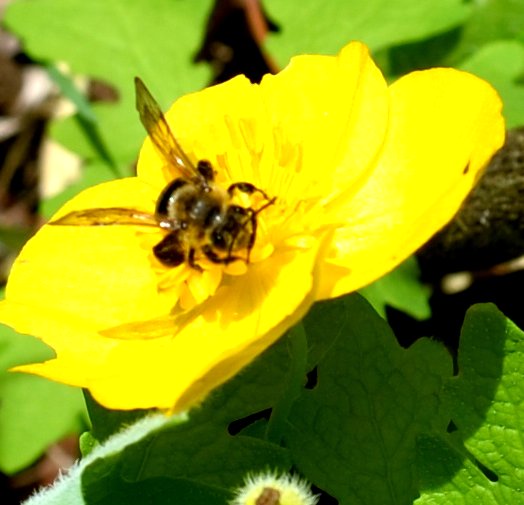
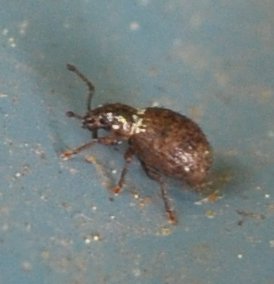
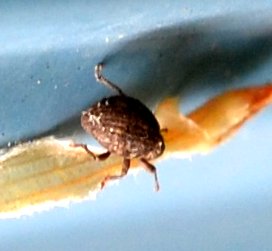
Remember that there is information in the name of the file for each image. You can see it by mousing over the image - look at the lower left of the screen.
Or you can click on the image to get to the (usually) larger image. Then the info is displayed in the address line above.
Good news! This little beetle that I couldn't identify last week was back and I can tell you definitely that it is probably the Flea Beetle, Phyllotreta zimmermanni. But then there appeared this shy little creature, who seemed only to want to get into that crack. Last in this row, one of those tiny tiny leafhoppers that look like an approximately 3 mm. long piece of white thread. You can't really see any other markings until you get as close as possible, and then the orange markings appear, and you see it is a leafhopper! This one looks like one of the Eratoneura.
 5 3 17 2.jpg)
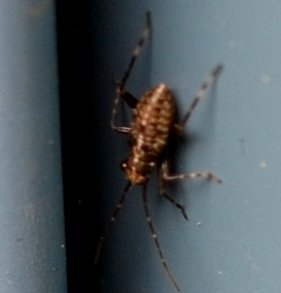

This is the quickest time we've ever spent before getting to this week's flies. Here are some large crane flies. So far all the crane flies I've seen this year have been "large" crane flies. When a person sees his or her first large crane fly, he/she usually thinks it is the mother of all mosquitoes. But! They are harmless (except to their prey) and mean no human no harm. This first one seems to have the same wing markings as Bugguide's Tipula dorsimacula It's really hard to make out the wing pattern when they are furled about the abdoman, which all the rest of my photos were.

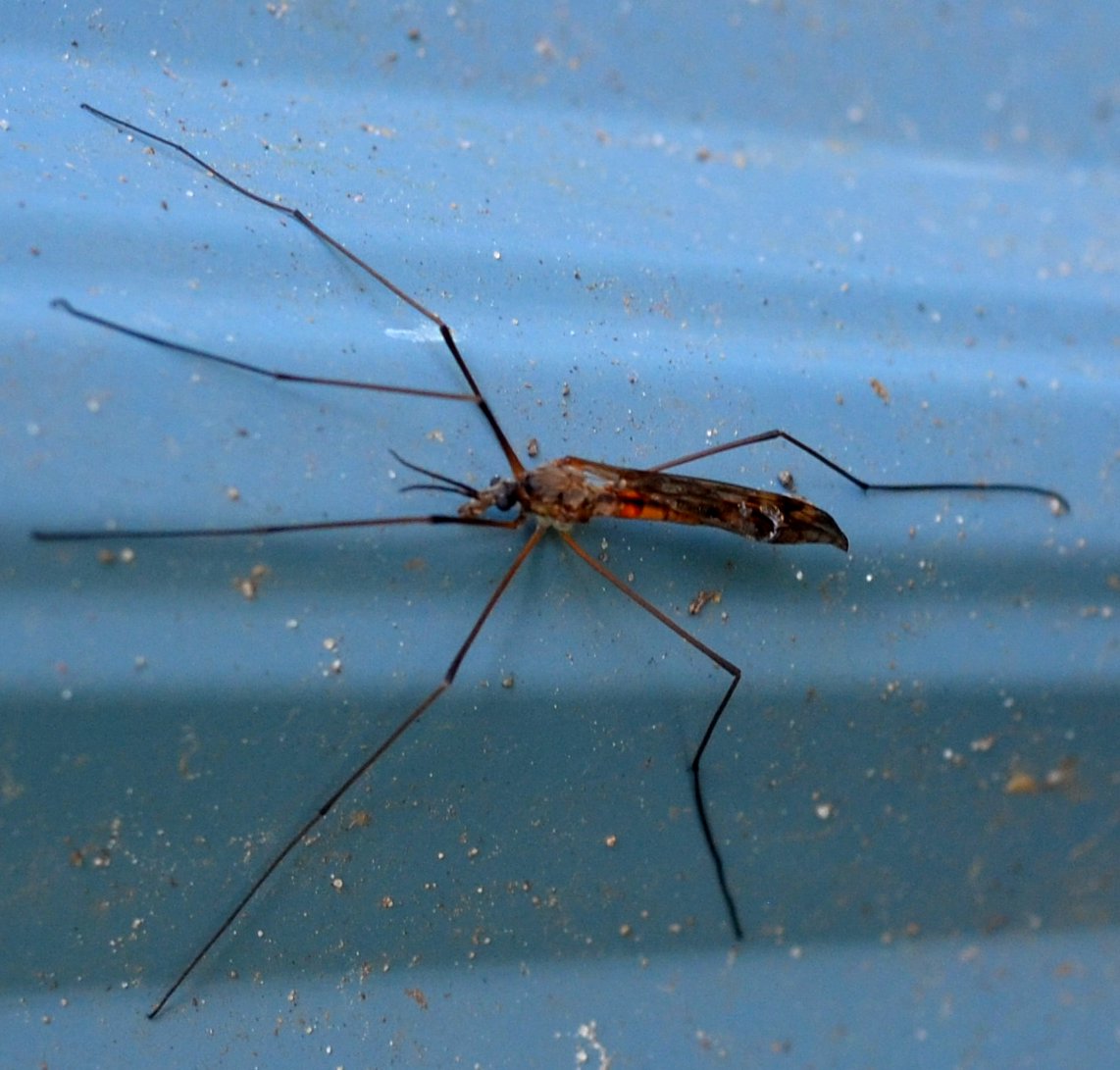
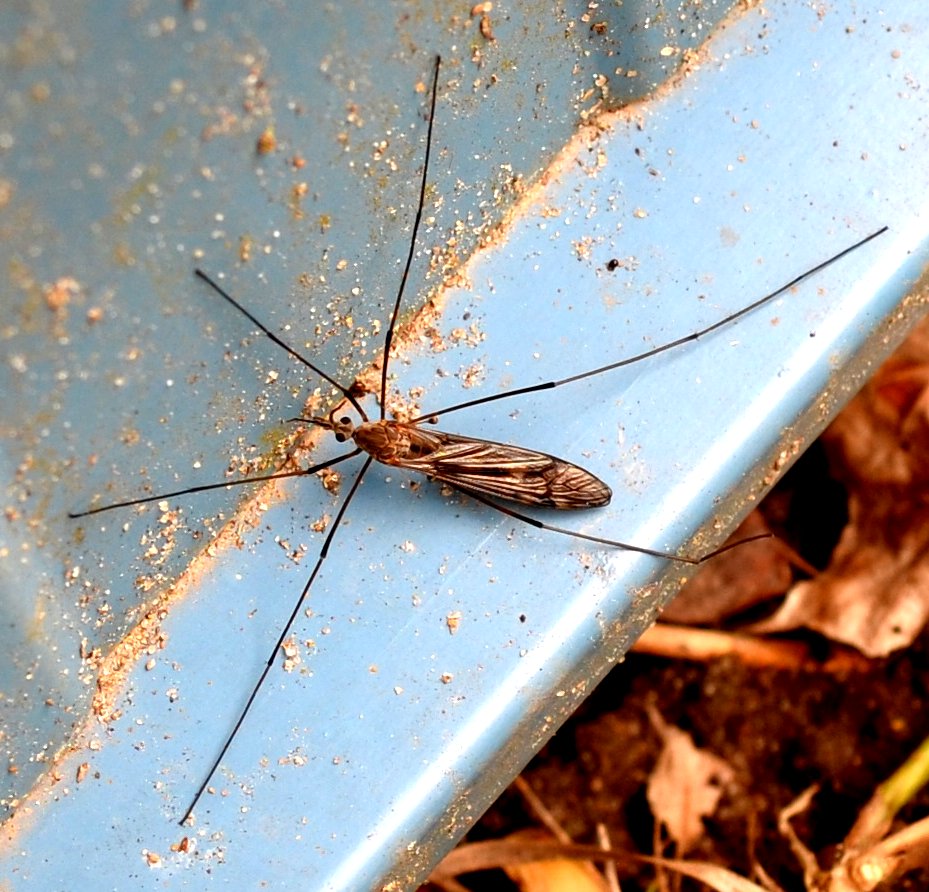
The March Flies are still here. Here once more is a Bibio femoratus female, then a male, and finally a male who has made a tricky landing onto a blade of grass or some such leaf. If I haven't said this this season, one way to tell the males from the females in many kinds of fly is that the males' huge eyes seem to join together in the middle of their heads, whereas (second time I've said that in this blog, sorry) the females' eyes are much smaller.
This distinction is particularly obvious in the March Flies, where the females' eyes resemble little earmuffs.
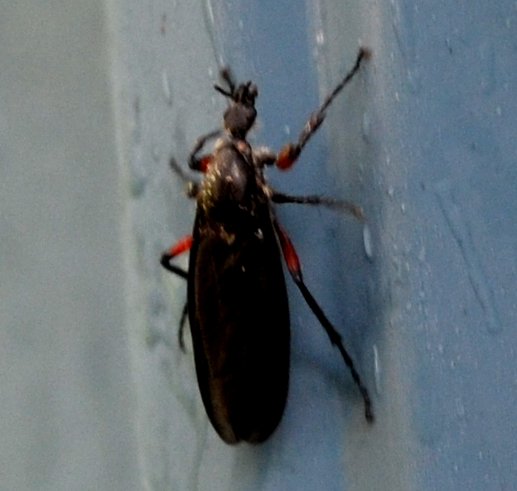
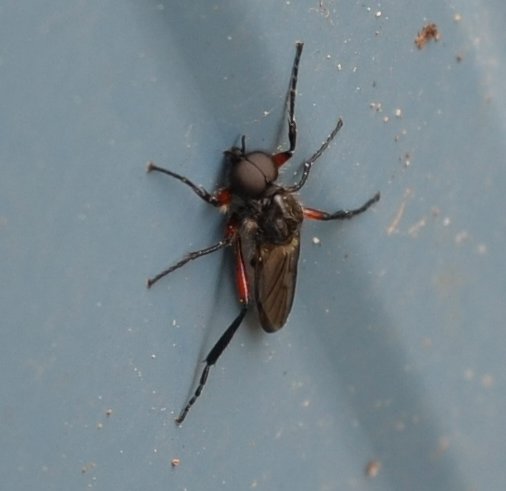
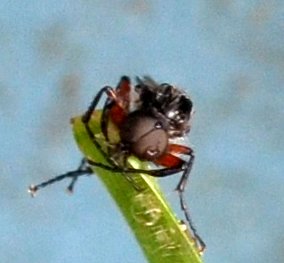
This week we were visited by copious tiny flies, so difficult to make out, but I got some start on them. This Vinegar Fly (Chymomyza amoena) seems to have visited in 2015, 2016 and now 2017, but only now did I, by going down lists of photos from Bugguide.net, finally find a picture that fit. Picture 2 is another Vinegar Fly, but in a different lineage (Drosophilidae, remember them from fruit fly lab?). This is the first time I've seen the last one in this row.
.jpg)
 5 3 17 1.jpg)
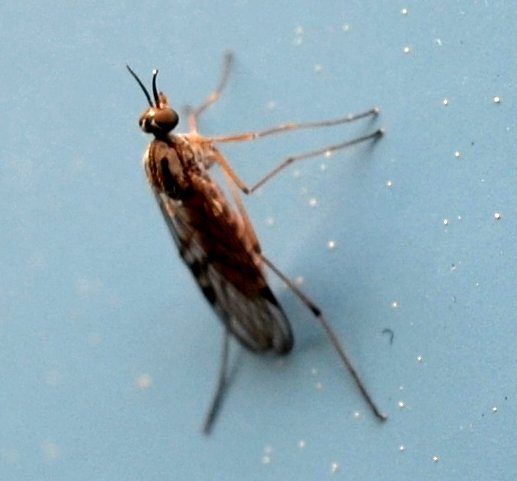
This fly with the yellow wing roots usually turns up in a search - Muscoidea - a relative of the house fly. I haven't seen many that got to Anthomyidae, but have seen a couple or one that got to Hydrophoria lancifer. I think this one could be anywhere on that spectrum. Still don't know what kind of roots the maggots (larvae of house-type flies) eat! Anyway, wonder how closely the three of these Muscoidea types are related!
 4 30 17 1.jpg)
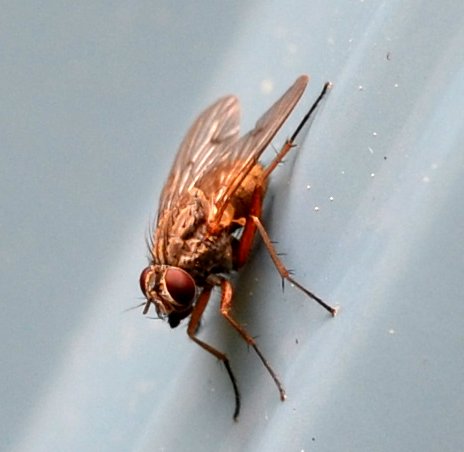
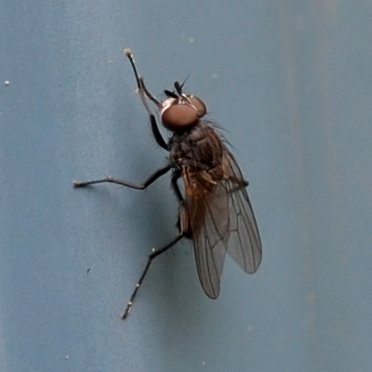
Herein lies another puzzle. Is this fellow a snipe fly or not? The shape of the abdomen is suggestive. The next one is another new one to me. I think we are at the beginning of a great daddy-long-legs summer. Here are two of the babies.
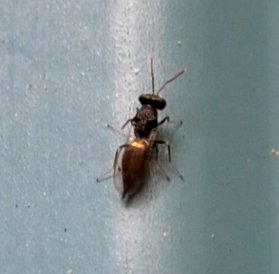
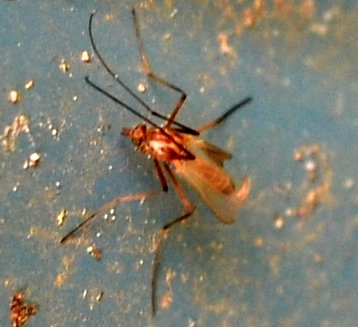
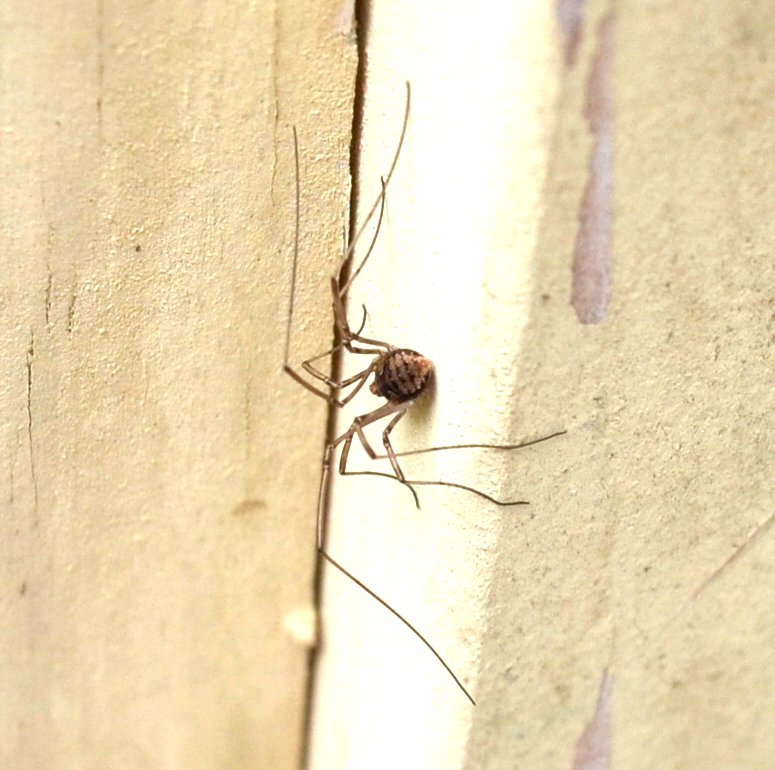
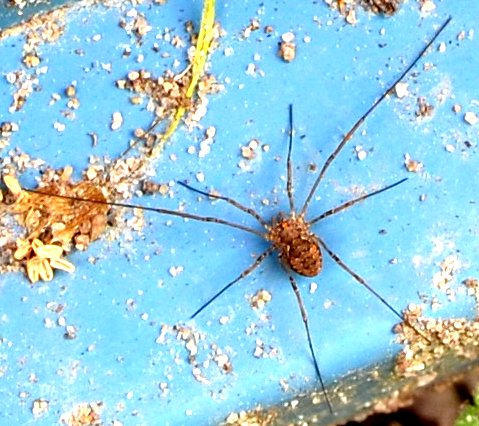
Aha! That little sawfly that drove me crazy last year is back. I kept thinking it was a rose sawfly Arge ochropus. But too many things were wrong. For one thing, the antennae were different in length and shape between the two sawflies. So I suppose we must stop at Tenthredinidae, off on another branch under sawflies. Out of order, of course, but we also had a number of pillbugs this week, and some slugs. That was when the weather was particularly wet.

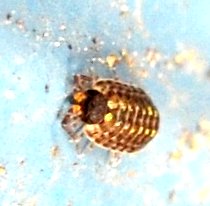
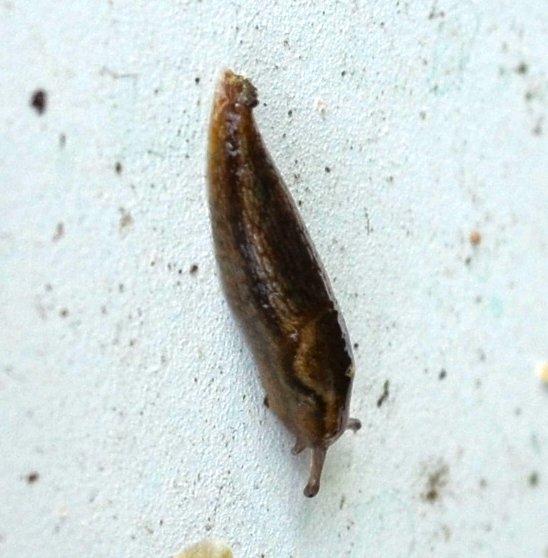
One day there were a dozen or so tiny baby spiders, black with stripey legs, on the north-west corner of the shop.
Something like yesterday, Cinco de Mayo, I saw one of those fascinating little cribellate spiders, the ones that look like a scrap of skin or fabric until they unfold into real spiders! Here's the one we saw open up on February18!
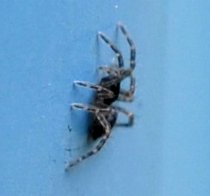
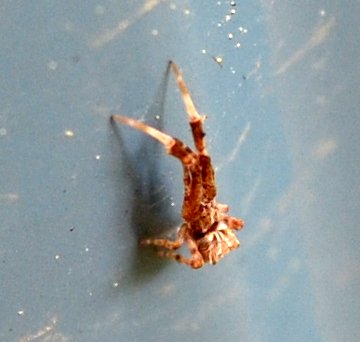
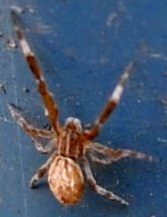
We also saw a ghost spider with what look like big black fangs. And we started to be able to tell some of the spiderlings that I have been calling possible precursors of pirate spiders (Mimetus puritanus) have really been morphing into tiny little M. puritanus. This one has the white marking which sometimes looks like a big mouth and sometimes like eyes. Here's one from July 23, 2016 for comparison.
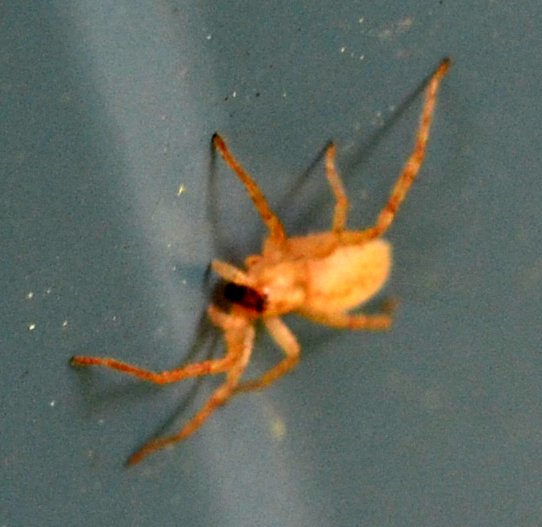
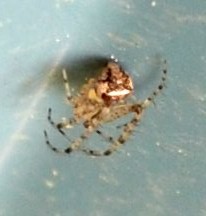
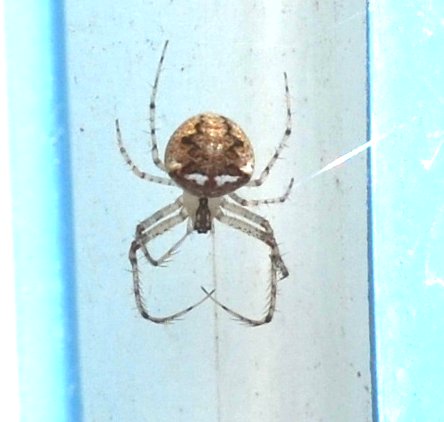
Let's go back to the flies so that I can apologize for a potential fright. Several kinds of mosquitoes have visited this week. When this blog came out on Sunday, I was fairly sure that I had spotted the Asian Tiger Mosquito. We get several species in this genus (Aedes) during the summer. This one looked to me a lot like the Asian Tiger Mosquito, Aedes albopictus. Its close relative, the Egyptian Aedes Mosquito
is the one most nearly associated with the yellow fever virus as a vector, and more recently as a vector for the Zika virus. But now Aedes albopictus is also carrying Zika in the south and in such countries as Niger, and as it gets warmer and warmer we can expect Zika to survive in the Midwest too. It turns out that (I have this from Andrea Kautz, Research Entomologist at the Carnegie Museum of Natural History) in about 2000 the Aedes genus split into two genera: Aedes and Ochlerotatus. What I photographed was now more likely to be Ochlerotatus japonicus, as shown below, while the Asian Tiger Mosquito was found in Bugguide.net. So just clear this mistake from your pretty little minds. It's a jungle out there! In fact, I'm still not sure that I can tell the difference without a score card! Except for one thing. The back of the Japanese Rock Pool Mosquito has a more tawny thatch than that of the Asian Tiger, whose back is black. Maybe someone would like to compile a list of differences in your copious spare time, as Tom Lehrer would say.
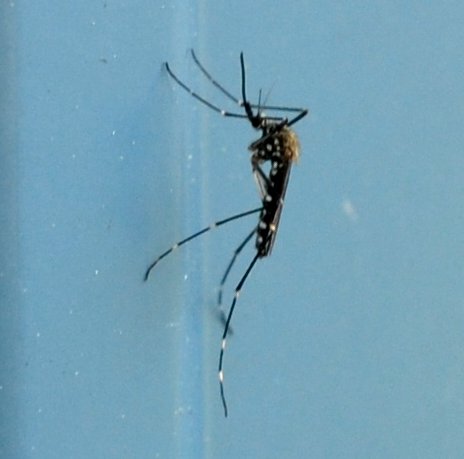
We're getting down to the bottom now. Here, 2 full weeks after hatching from their tiny eggs, are a few tadpoles (you can hopefully see five of them)taking on the shape we recognize. Here also are the wild geranium with its lovely pink flowers, and some of the rapacious forget-me-not, hiding a small character that I only just noticed upon enlarging the image. After clicking twice, you should be able to make out two legs and a grey abdomen.
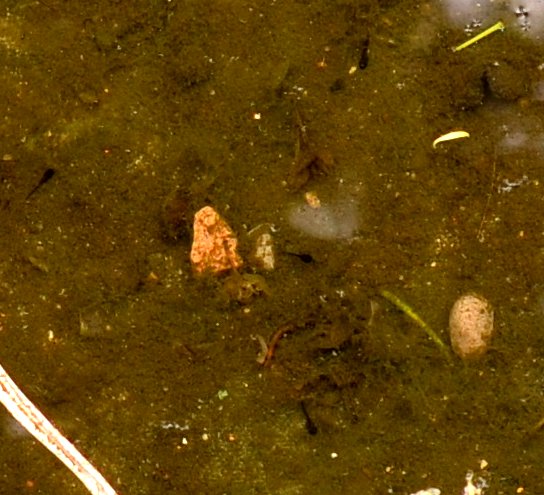


An interesting week and a shortish blog. Keep on wishing the toadlets good health and that we can identify even more new creatures.
Love, Martha
Back to April 30, 2017
Forward to May 14, 2017
Back to 2017 menu
Back to main menu





 5 3 17 2.jpg)








.jpg)
 5 3 17 1.jpg)

 4 30 17 1.jpg)


















